1.2: Art of the Past and the Origins of Creativity
- Page ID
- 31974
A common saying is, 'history always repeats itself'. Art history and art movements also repeat; artists are influenced by the past and present; the Romans copied the Greeks, and earlier styles inspired art movements. The early Cycladic (1.2) carved simple forms with static arms and legs, David (1.3) by Michelangelo uses contrapposto positioning and realistic details, and the yellow modern art sculpture (1.4) is free form yet based upon a human figure and the interpretation in different millennia, referred to as 'artistic' recurrence.
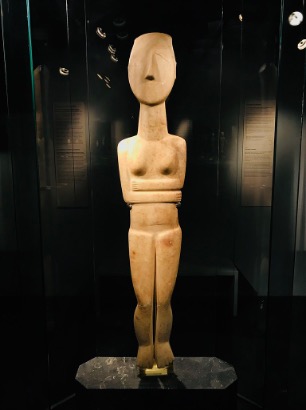
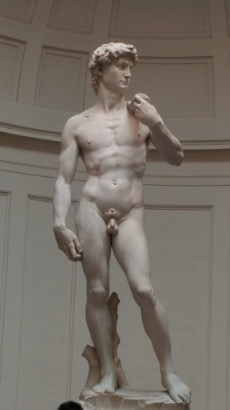
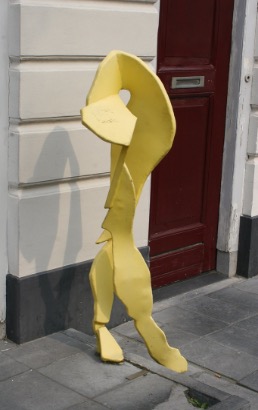
Artists get their ideas from many places, have you ever wondered where? Why are they creating art, and what is the driving force behind their creation? Is it political, sacred, dreamscape, ceremonial, cultural, expression, therapy, illustrative, historical, literature, poetry, musical, theatrical, nature, narrative, exposing, thought-provoking, or experimental, whatever it is, it must come from within the artist. The process is part of the journey, and the journey is the process. If a mistake happens, paint over it. There is no such thing as a mistake in art; it is just not finished. Art is only complete when the artist believes it is finished!
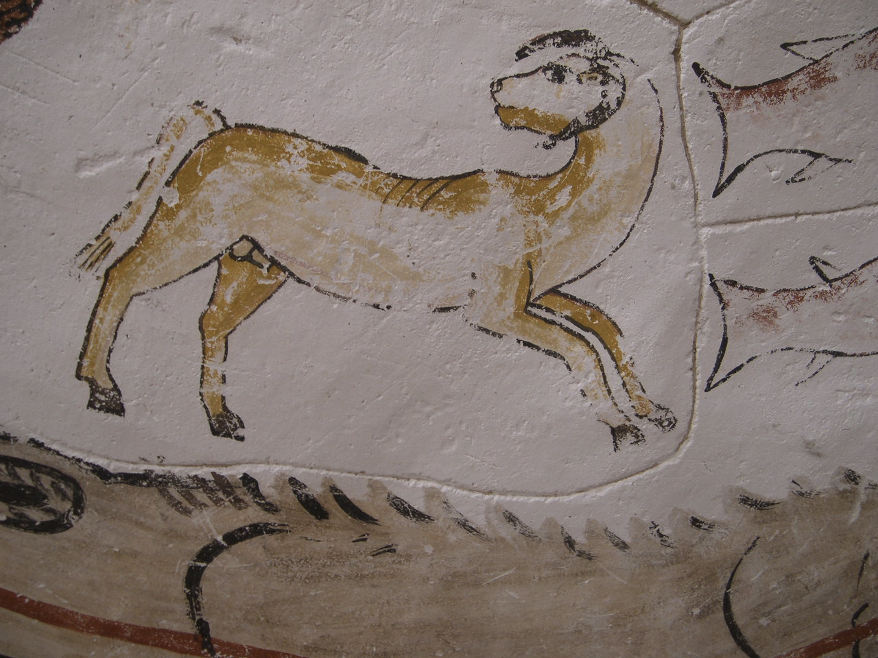
Over 4 million years, humans evolved into the unique Homo Sapiens—modern human brains have increased in size leading to creative and organized groups of prehistoric people. The discovery of fire was perhaps one of the greatest achievements of the Stone Age, and scholarly evidence supports the practice of fire around 400,000 years ago, although some scholars believe it might have been much earlier. The human brain divided between the humanities and science began to evolve as complementary divisions eons ago. Fire is at the heart of our creativity.
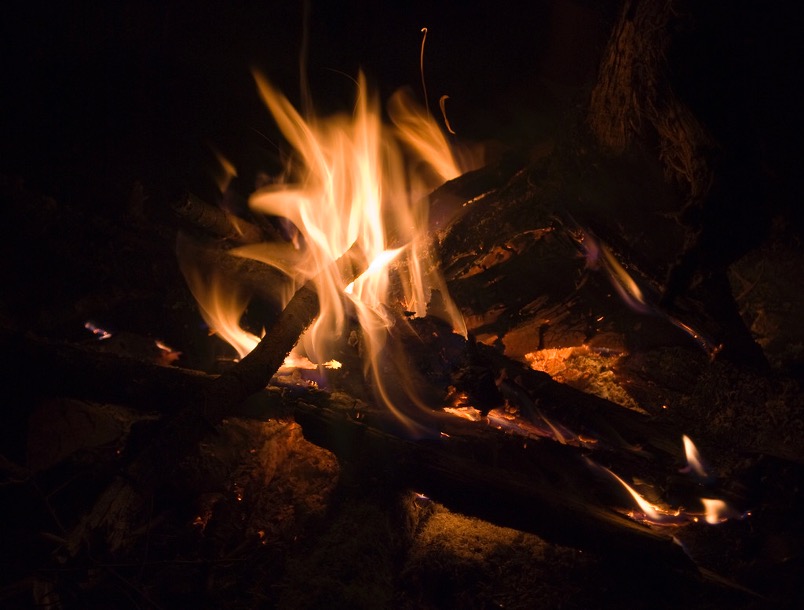
Everyone loves a campfire; it brings people together when the skies darken, and long nights ensue. Research indicates that adding protein to a diet allowed the brain to increase in size. Protein, an essential element for the evolution of the human brain, fire likewise allowed the cooking of protein, eliminating the restriction of raw foods. This increase of protein in the prehistoric diet lead to the development of a larger front lobe brain creating more empathy, problem-solving, and social intelligence. Did the stories told around the chiaroscuro firelight, with singing, dancing, and chanting, lead to drawing on the walls of caves or rock outcrops, recording their epic hunts or daily lives? The unification of small nomadic groups of people required rules and regulations which may have begun around the campfire.
According to carbon dating methods, the earliest known artwork is 30,000 years old (Venus of Willendorf 1.7) and associated with those who created cave art. Previously, anthropologists considered Mesopotamia as the "Cradle of Civilization" home to the oldest culture in the world. Cultural anthropologists have defined the Cradle of Civilization to signify the period of written language, agriculture, raising animals, and public buildings. This list was used by most cultures and now defines Ancient Egypt along the Nile, Mesopotamia, the Indus Valley, Ancient China in the Yellow River region, the Central Andes and Mesoamerica as centers where different civilizations started independently.

Creativity continued to grow among cultures, and depending on the natural resources, grand palaces, tombs, and structures rose out of the earth. Art appreciation usually focuses on Egypt, Greek, Roman, Renaissance, and modern art. This textbook covers cultures well beyond classical art and delves into the numerous societies of people and their culture from the six continents. Exploring art outside the norm, understand the origins of creativity, and how it connects the art of the past in all cultures across the world is critical in art appreciation.


